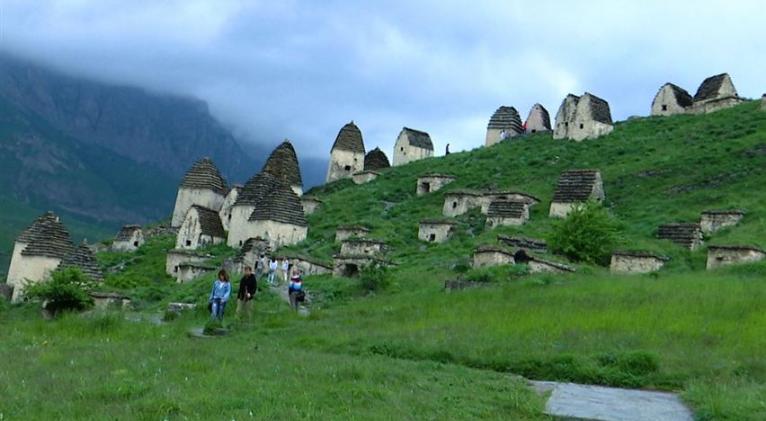The City of the Dead

Photo: Arián López
Dargavs is a small village located in the valley of the Midagrabidon River in the Republic of North Ossetia, in the North Caucasus region of Russia, surrounded by five mountain gorges.
Its uniqueness goes beyond the high mountain ranges. It is the site of an ancient cemetery known among locals as the city of the dead. Almost one hundred tombs dating back to the 14th century are an emblematic representation of Ossetian architecture. Each one belongs to a family; the larger the structure, the highest the number of bodies buried there.
History tells that the graves were used as a place of volunteer exile for local dwellers who suffered from a cholera epidemic that hit the mountain people in the 18th and 19th centuries.
At that time the infectious disease left many people dead, breaking entire lineages. As a result, the population of North Ossetia decreased from 200,000 in the late 18th century to 16,000 in the mid-19th century.
There is a well in front of each tomb. The story goes that once the body was buried, a coin was thrown into it; if it hit the stone at the bottom and sounded, it meant that the soul of the deceased had reached heaven.
When the graves were studied, archaeologists found objects belonging to different historical stages. The most incredible one are boats that had several bodies inside. In one of them, an oar was even found.
Their relatives believed everything that they used during their life and that, they believed, would be useful to them in the other world.
But why did medieval Ossetians need boats in the mountains without large navigable rivers? That is one of the mysteries that science cannot explain yet.
However, according to local beliefs, the dead must cross a river to reach the other world, so burying them in such boats helped them in the journey.
This remote area also has beautiful landscapes from the top of the mountains, impressive towers located on summits that served remote villages to communicate among them, and a natural setting as untouched as in few other sites, along with a unique Caucasian cuisine and the endless hospitality of Ossetians.














Add new comment